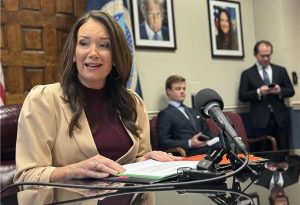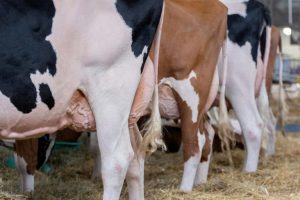
Some of the animals died of secondary infections contracted after bird flu weakened their immune systems, said state veterinarians, agriculture officials, and academics assisting in state responses to bird flu.
Dairy cows infected with avian flu in five U.S. states have died or been slaughtered by farmers because they did not recover, state officials and academics told Reuters.
Reports of the deaths suggest the bird flu outbreak in cows could take a greater economic toll in the farm belt than initially thought. Farmers have long culled poultry infected by the virus, but cows cost much more to raise than chickens or turkeys.
A U.S. Department of Agriculture spokesperson said the agency knew of a few deaths but that the vast majority of cows recover well. Reuters was not able to determine the total number of cows with bird flu that died or were killed in South Dakota, Michigan, Texas, Ohio and Colorado.
Avian flu has infected dairy cows in more than 80 herds across 10 states since late March, according to the USDA.
Some of the animals died of secondary infections contracted after bird flu weakened their immune systems, said state veterinarians, agriculture officials, and academics assisting in state responses to bird flu. Other cows were killed by farmers because they failed to recover from the virus.
In South Dakota, a 1,700-cow dairy sent a dozen of the animals to slaughter after they did not recover from the virus, and killed another dozen that contracted secondary infections, said Russ Daly, a professor with South Dakota State University and veterinarian for the state extension office who spoke with the farm.
“You get sick cows from one disease, then that creates a domino effect for other things, like routine pneumonia and digestive issues,” Daly said.
A farm in Michigan killed about 10% of its 200 infected cows after they too failed to recover from the virus, said Phil Durst, an educator with Michigan State University Extension who spoke with that farm.
Michigan has more confirmed infections in cattle than any state as well as two of three confirmed cases of U.S. dairy workers who contracted bird flu.
In Colorado, some dairies reported culling cows with avian flu because they did not return to milk production, said Olga Robak, spokesperson for the state Department of Agriculture.
Ohio Department of Agriculture spokesperson Meghan Harshbarger said infected cows have died in Ohio and other affected states, mostly due to secondary infections.
The Texas Animal Health Commission also confirmed that cows have died from secondary infections at some dairy operations with avian flu outbreaks.
Officials could not provide figures for the number of statewide cow mortalities.
New Mexico’s state veterinarian, Samantha Uhrig, said farmers increasingly culled cows due to decreased milk production early in the outbreak, before the U.S. even confirmed bird flu was infecting cattle. Culling decreased as farmers learned that most cows gradually recovered, she said.
Officials in North Carolina and Kansas said there have been few to no cow deaths associated with bird flu in their states. Idaho officials did not respond to requests for information.
Bird flu virus particles were found in beef tissue taken from one dairy cow sent to be slaughtered for meat, and meat from the animal did not enter the food supply, USDA said last month.
The agency has reported that no viral particles were found in samples of ground beef collected at retail stores, and that no bird flu virus was found after cooking ground beef to medium to well done, after it was injected with a virus surrogate as part of an experiment.
(Reporting by Leah Douglas in Washington and Tom Polansek in Chicago; additional reporting by P.J. Huffstutter in Chicago; Editing by Caroline Stauffer, Lisa Shumaker and Bill Berkrot)
You can now read the most important #news on #eDairyNews #Whatsapp channels!!!
🇺🇸 eDairy News INGLÊS: https://whatsapp.com/channel/0029VaKsjzGDTkJyIN6hcP1K























